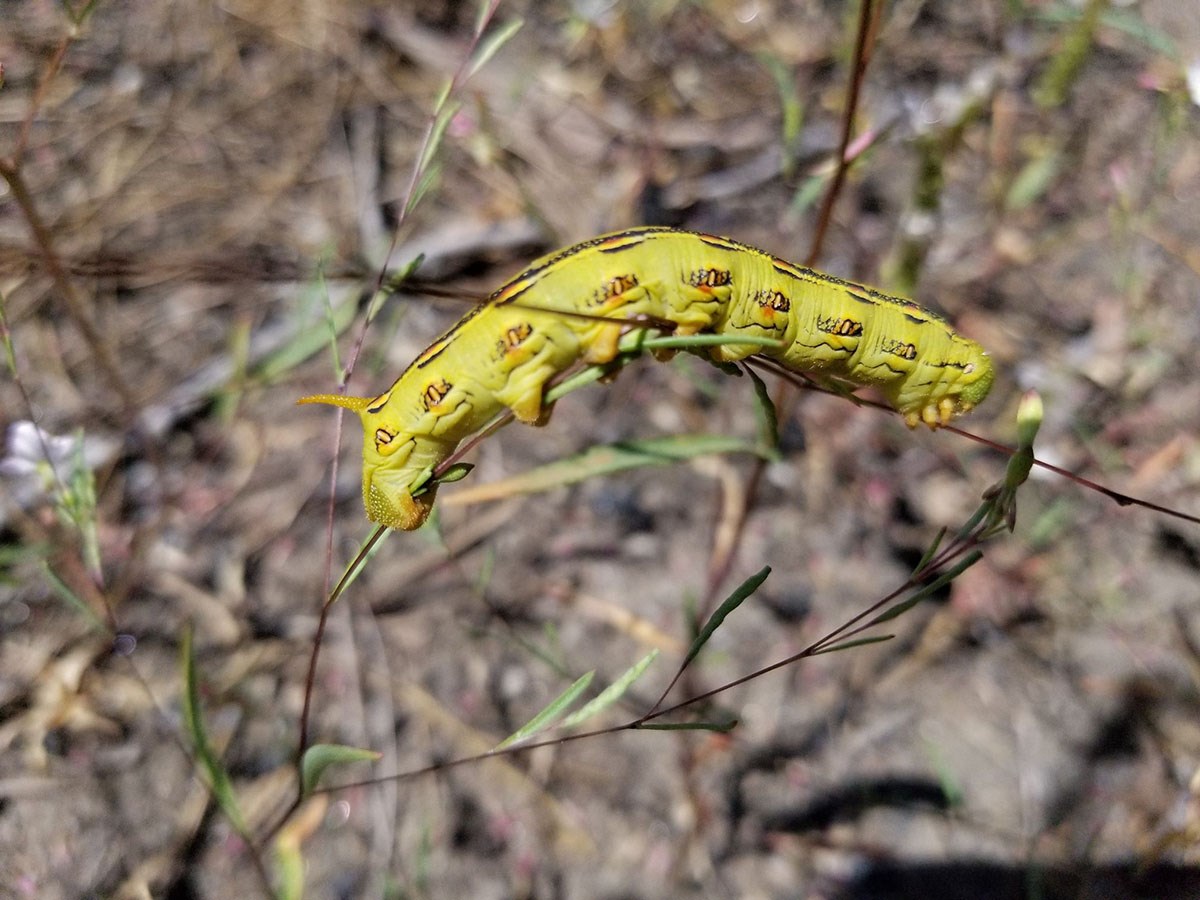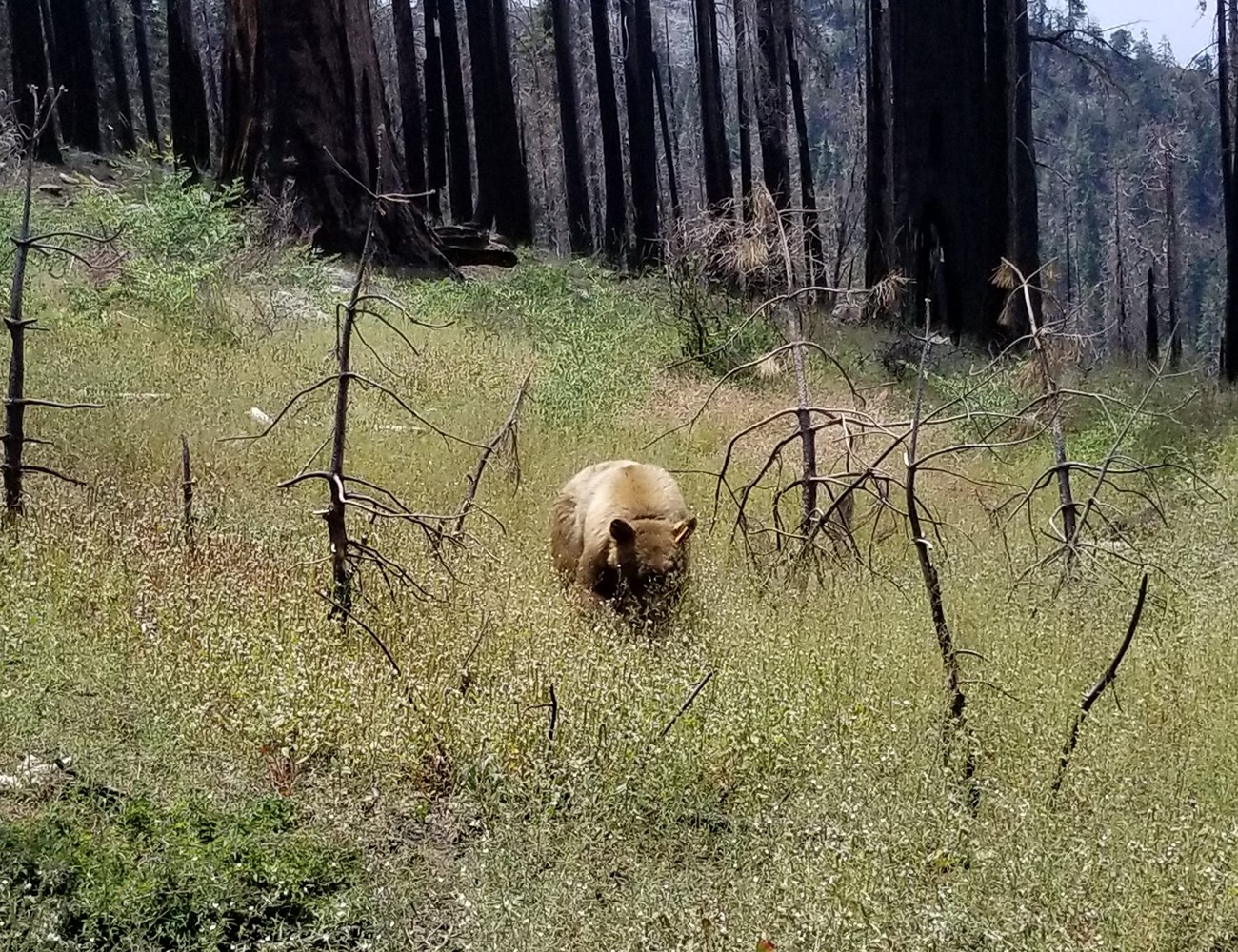Last updated: February 6, 2024
Article
White-lined Sphinx Moths Benefit from Abundant Wildflowers

Photo courtesy of Paul G. Johnson
Record levels of precipitation and snowpack in 2023 led to spectacular spring and summer wildflower blooms in many parts of California, from coastal areas, grasslands, and deserts up to foothills, forests, and high elevations of the Sierra Nevada and White Mountains. The abundant flowers also benefitted pollinators and other animals. One pollinator appeared in what seemed like record numbers — the white-lined sphinx moth (Hyles lineata), also known as the hummingbird moth because it looks, moves, and eats like a hummingbird.
Following are observations from NPS and USGS scientists who observed large numbers of white-lined sphinx moths or the earlier caterpillar life stage of these moths.

Photo courtesy of Nate Stephenson
In late August 2023, Nate Stephenson, Emeritus USGS research ecologist, was backpacking in Kings Canyon National Park with former backcountry ranger, Rob Hayden. In Dusy Basin at about 11,000 feet elevation, they saw MANY white-lined sphinx moths “zipping around and feeding on penstemons and a few other species”. Nate reported that standing in any given penstemon patch, they could often see a dozen moths at once. And the moths were nearly everywhere they went, on both sides of the Sierran Crest. Neither Nate nor Rob, in all his decades as a backcountry ranger, had ever seen anything like it.

NPS / Tony Caprio
The parks’ fire ecologist Tony Caprio had been running into sphinx moths in lower elevation mixed conifer forests. In mid-July, he also encountered large yellow caterpillars at the western edge of Giant Forest in Sequoia National Park while visiting a fire effects plot. He photographed a few feeding on gayophytum, an herbaceous plant in the evening primrose family. He later guessed (and confirmed) that these were sphinx moth caterpillars. While photographing them, he heard a noise behind him, and noticed a black bear was also searching for these large, yellow caterpillars but with the intent of eating them!

NPS / Tony Caprio
Paul Johnson, wildlife biologist at Pinnacles National Park, noted that the sphinx moth caterpillars can eat many different kinds of plants during an irruption year (when their populations spike), but typically their host plants are in the Onagraceae (evening primrose) family. He said during mid to late summer in the Sierra Nevada, the life cycle is probably roughly: egg (1 week), caterpillar (4 weeks), pupa (1 week), adult (1+ week). He also noted that this species pupates several inches underground. Later in the year, as days grow shorter and cooler, the pupae produced then will delay their emergence until the next spring. Paul observed many white-lined sphinx moths when visiting the southern California deserts in April and the White Mountains in eastern California in mid-July.

Photo courtesy of Nate Stephenson
As Nate commented – This really makes you wonder about mysterious population dynamics and their cascading effects.
While not a formal study, natural history observations, especially collected by many people over large areas, can contribute to our longer term knowledge of relationships among plant and animal population dynamics, climate, and disturbance.
Paul Johnson did a quick look at some of the recent observations of these moths reported in iNaturalist, an application for tracking observations, sharing them with others, and discussing findings. He noted there were more California observations of these moths recorded in 2023 than in the previous five years combined, and that more than one-third of all California iNaturalist records occurred in 2023. Some of this increase is certainly related to the increased use of iNaturalist to record observations of plants and animals, but this increase also likely reflects the greater numbers of moths being seen compared to recent drier years with a lower abundance of wildflowers and caterpillar food plants.
